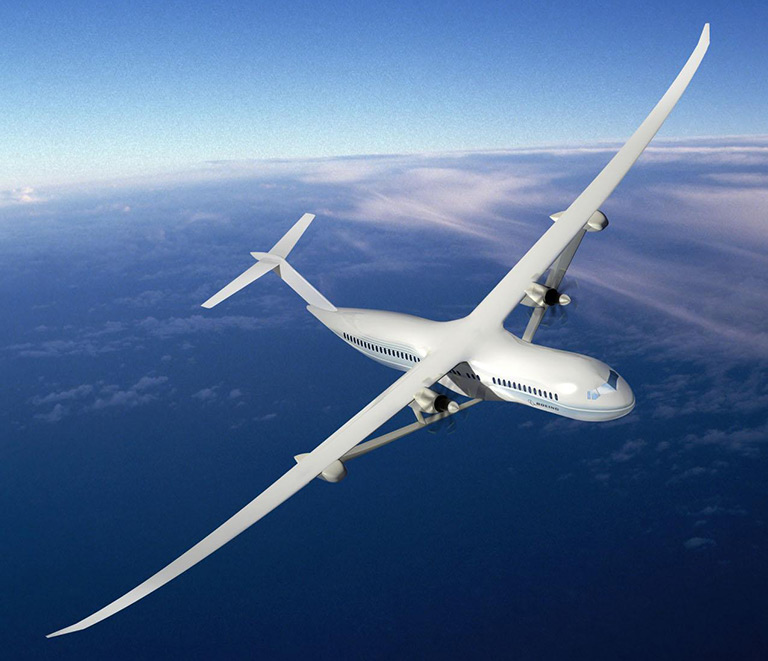
A series of NASA-backed projects, including one led by the University of Tennessee, will change aircraft in many ways. The result of the work will lead to over-fuselage wings, such as seen in the illustration, instead of the under-fuselage configuration used by most commercial aircraft today.
A team led by researchers from the Tickle College of Engineering is one of five selected by NASA as part of an overall investment of nearly $50 million to lead the next aviation revolution.
The goal of UT’s team is to produce much more aerodynamically capable aircraft, with NASA providing $9.9 million for the efforts upon final negotiations—believed to be the largest NASA award for a UT-led project.
“It is hugely gratifying to see the University of Tennessee recognized in this way,” said Chancellor Beverley Davenport. “This is a great example of how a public-private partnership and inter-institutional cooperation can result in solutions that address important challenges facing our world.
“We look forward to the success of this team and will point to it as an example of what corporate and university partners can accomplish when they join forces. Congratulations to Dr. Coder and his team.”
UT will lead a team composed of researchers from Penn State University, Texas A&M University, the University of Illinois Urbana-Champaign, Old Dominion University, the University of Wyoming, and two aviation companies—the Boeing Corporation and PCC Airfoils.
The goal of the combined effort is to provide breakthroughs that totally reshape aviation by improving flight dynamics, communications, speed, and propulsion. Advancements are expected to alter the look, cost effectiveness, safety, and reliability of aviation.
“Creating a better wing—one with less drag, one that is more efficient—is where we can really make a difference,” said James Coder, an assistant professor of aerospace engineering. “This is a game changer for aviation.”
Coder will serve as lead on the project, with another assistant professor from the Department of Mechanical, Aerospace, and Biomedical Engineering, Stephanie TerMaath, also serving in a leadership role. Ryan Glasby, on the faculty of the UT–Oak Ridge National Laboratory Joint Institute for Computational Science, is another key UT member of the team.
UT’s focus is on redesigning wings around a principle known as laminar airflow, which in simplest terms is the opposite of turbulent airflow.
The key to obtaining such steady flow is a design known as a slotted natural-laminar-flow airfoil. Those airfoils have much less drag and have potential added benefits such as controlling shockwaves at high speeds and giving extra lift at low speeds.
Unlike the airfoils in widespread use today, which extend and retract depending on which aspect of flight a plane is in, slotted airfoils have a permanently set position.
While the new foils themselves have an improved flow, eliminating the bulky machinery and hydraulics needed on current aircraft reduces overall weight and improves fuel economy.
“We are confident in the concept and now need to show that it can be integrated into next-generation commercial aircraft,” said Coder. “In a sense, it’s creating a new building block for aircraft.”
“These awards further enhance the strong relationship we have with our university partners,” said Jaiwon Shin, NASA’s associate administrator for aeronautics. “We expect the awards will spur the nation’s leading universities to take a larger leadership role in advancing the revolutionary ideas needed to transform aviation and further advance US global leadership in the aviation community.”
The other projects selected that are also currently undergoing negotiations are:
- University of South Carolina: Research into advanced aircraft communications
- Texas A&M University: Research into supersonic aircraft that minimize noise from sonic booms
- Ohio State University: Research into electric propulsion
- Arizona State University: Research into future air traffic management systems